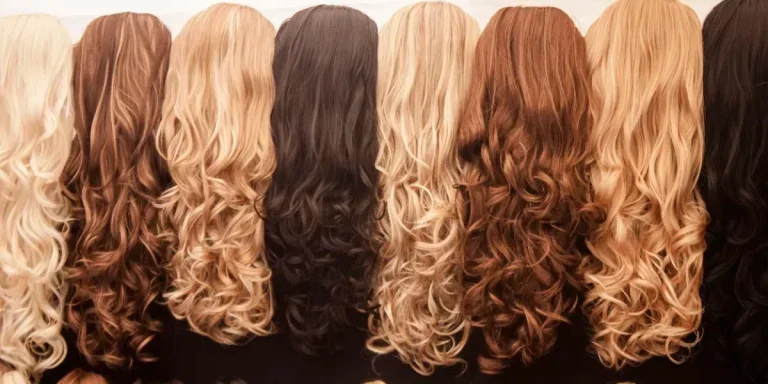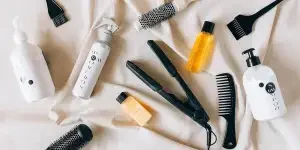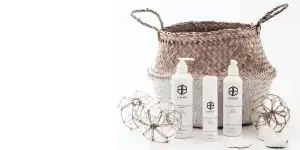Human hair wigs are an incredibly popular choice for wigs because they provide so much flexibility when it comes to styling, making it easy to switch up your look day-to-day. While learning to style a wig may seem daunting at first, it will become second nature once you get the hang of it. Follow these style tips, and you will be a pro in no time.
For businesses looking to sell wigs, understanding how to style human hair wigs is crucial not only for marketing your products but also for providing valuable information to your customers.
In this comprehensive guide, we will walk you through the essentials of how to style human hair wigs step-by-step, from preparation to finishing touches.
Table of Contents
Why choose a human hair wig?
Essential tools for styling a human hair wig
Preparation before styling: Washing your wig
How to style a human hair wig
Coloring a human hair wig
Maintaining the style
Final thoughts for businesses
Why choose a human hair wig?
Before getting into styling, let’s talk about why human hair wigs are such a popular choice. Since these wigs are made from real human hair, it means they can be curled, straightened, dyed, and even cut to suit your personal preference and compliment your personal style. Of course, even though synthetic wigs have improved in quality because human hair wigs are made from human hair, they look more natural. Human hair wigs also tend to last longer than synthetic wigs, making them a worthwhile investment.
This freedom in styling, the natural look, and durability are major selling points for many customers who want a wig that looks and feels natural.
The global hair wigs and extensions market was valued at USD 7.82 billion in 2022 and is expected to reach USD 19.12 billion by 2028, growing at a compound annual growth rate (CAGR) of 16.06% during that period.
But, are there downsides to human hair wigs? Of course there are. While the flexibility to style a human hair wig appeals to many people, others prefer a synthetic wig that doesn’t require as much maintenance.
Essential tools for styling a human hair wig
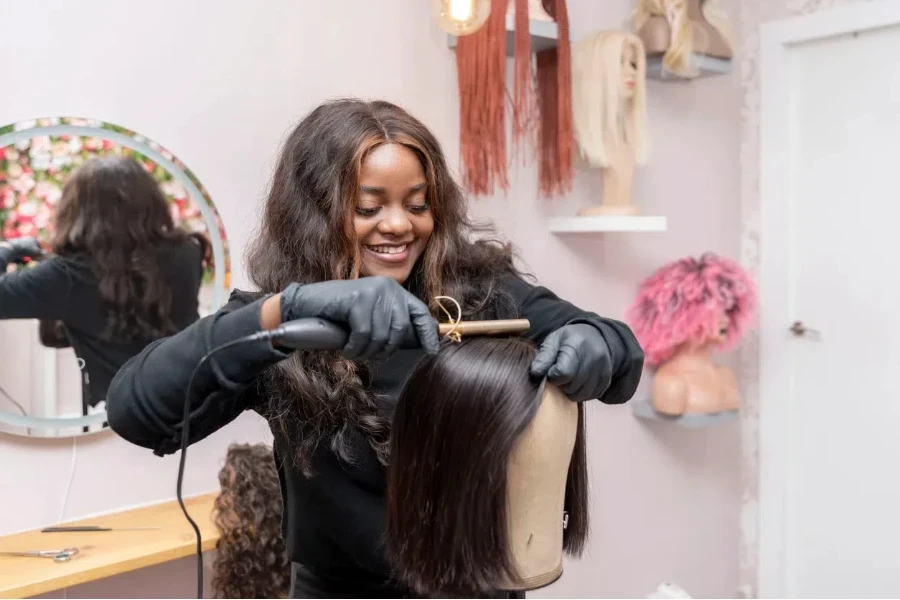
One more thing before getting started with styling—tools! It’s important to have the right tools on hand to make the styling process easy. So, here is a list of must-have hair care tools (and products) that you should ensure you have before styling your wig.
For businesses selling wigs, you may want to consider carrying these products for women who don’t have them already.
- Wig stand or mannequin head: A wig stand is one of the things you probably don’t already have, but it can make the biggest difference when styling your wig, especially for beginners. A stand holds the wig in place while styling it, which makes it much easier to manage.
- Wide-tooth comb: A wide-toothed comb detangles hair gently without causing breakage.
- Wig brush: You also might want to consider a wig brush that is specially designed for wigs to brush out the wig while maintaining its integrity.
- Sulfate-free shampoo and conditioner: Just like natural hair, washing your wig is important. Sulfate-free shampoo will clean the wig without stripping its natural moisture.
- Heat protectant spray: Salon-grade heat protectant shields the hair from heat damage when using styling tools. Always apply heat protectant before using flat irons, curling irons, or blow dryers.
- Flat iron/straightener and curling iron or rollers.
- Hair clips: Holds sections of the wig in place while styling.
- Blow dryer with diffuser attachment: Dries the wig quickly and can help set styles, particularly for curly wigs. However, if you have the time, it’s ideal to let the wigs dry naturally.
- Styling gel, mousse, or hairspray.
Preparation before styling: Washing your wig
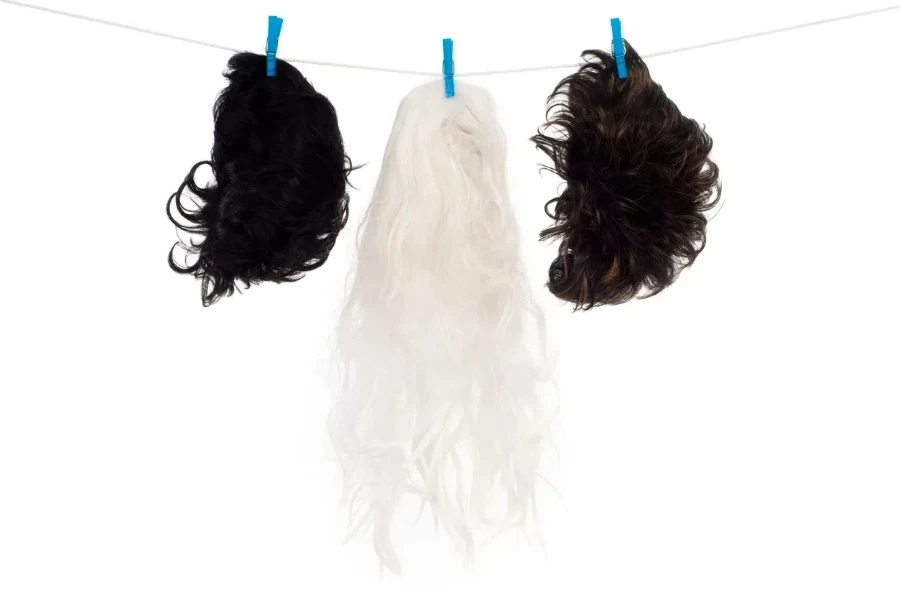
As we mentioned, washing your human hair wig is just as important as washing your hair would be.
How often should I wash my human hair wig?
While there isn’t necessarily a right or wrong answer when it comes to how often you should be washing your wig, we would recommend every 7–10 wears. But consider factors like how much you sweat while wearing it (may need more washes during hotter seasons) and how much product you’ve put in it (may need to be washed before re-styling).
Here is a step-by-step guide for washing and drying your wig before styling:
1. Washing the wig
Washing your human hair wig removes any dust, dirt, or product buildup and prepares the hair for styling. Here’s how to properly wash a human hair wig:
- Step 1: Detangle the wig with the help of a wide-toothed comb or a wig brush. Start from the tips and work your way up to avoid pulling and breaking the hair.
- Step 2: Use a sulfate-free shampoo designed for human hair. Apply the shampoo to the wig and gently massage it into the hair, being careful not to rub or tangle the hair.
- Step 3: Rinse the wig thoroughly with lukewarm water until the shampoo is completely washed out.
- Step 4: Apply moisturizing conditioner to the wig, focusing on the ends. Let it sit for a few minutes, then rinse it out with cool water.
- Step 5: Gently squeeze out excess water and pat the wig dry with a towel. Do not wring or twist the hair.
2. Drying the wig
After washing, the wig must be fully dried before any styling can take place. Never style a wet wig.
The best way to dry a human hair wig is to air dry it using the following instructions:
- Place the wig on a wig stand to maintain its shape while it dries.
- Allow the wig to air dry in a well-ventilated area. Avoid placing it in direct sunlight or near a heat source, as this can damage the hair.
If time is an issue, you can use a blow dryer on a low heat setting. Keep the dryer at least 6 inches away from the wig to prevent heat damage.
How to style a human hair wig
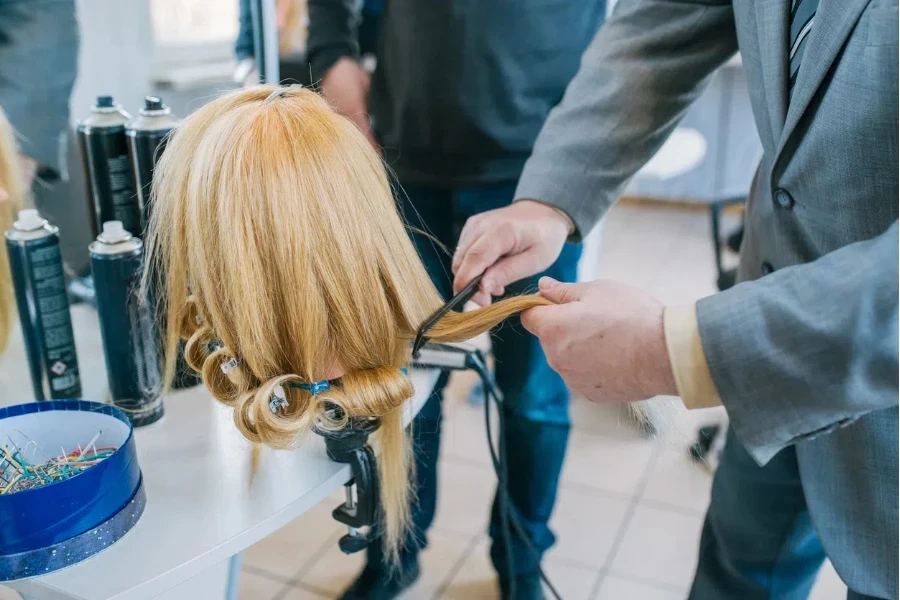
We’ve finally made it to the styling section! Here are some tips for straightening, curling, and cutting your wig to suit your personal style or create a new look:
1. Straightening
Straightening a human hair wig is simple and can be done with a flat iron by following these steps:
- Step 1: Ensure the wig is completely dry before using any heat tools.
- Step 2: Apply a heat protectant spray to the wig to prevent damage from the flat iron.
- Step 3: Section the hair into manageable parts. Create approximately 4–6 different sections depending on the thickness of your wig and keep them separate using hair ties or clips.
- Step 4: Take small sections of hair and move the iron slowly to avoid damaging the hair, but don’t let it sit in one spot for too long. Be gentle and ensure you aren’t pulling at the hair as you go. Also, stay about an inch away from the roots to prevent any damage to the lace or cap underneath.
- Step 5: When you’re done and happy with the look, use a light hairspray to set the style.
2. Curling
Curling a human hair wig adds volume and texture for a more fun or even glamorous look. You can use a curling iron or rollers, following this simple guide:
- Step 1: Apply a heat protectant to the wig.
- Step 2: As with straightening, section the hair to make it easier to curl. The number of sections you choose can change the look by increasing or decreasing the number of curls. For tighter curls, you’ll want more sections; for loose beachy curls, maybe only 2–3 sections.
- Step 3: Wrap each section around the barrel. Depending on how tight you want the curls, you’ll need to leave them for a different amount of time. For tight curls, 10–25 seconds and 5–7 seconds for loose curls.
- Step 4: Allow the curls to cool in your hand before combing them out or styling further.
- Step 5: Finish with hairspray.
Here are some extra tips for more natural, loose beachy curls:
- Start at the bottom when curling and only go up about halfway
- Curl in both directions
- Break up the curls by running your fingers through them after you’ve finished
Remember to keep the temperature low on your curling iron to avoid damage. Ideally, you want to keep your curling iron at approximately 250 Fahrenheit, but definitely keep it below 300.
If you have the time to leave your wig overnight, you could also use rollers.
3. Cutting and trimming
Cutting a human hair wig should be done with caution, as mistakes can be difficult to correct. If you’re not confident in your cutting skills, consider leaving this to a professional. However, if you want to trim the wig, here’s a basic guide:
- Step 1: Place the wig on a wig stand and secure it in place.
- Step 2: Decide where you want to cut and section the hair accordingly.
- Step 3: Use sharp hair cutting scissors to trim the hair, starting with small amounts. It’s easier to cut more hair if needed than to fix a mistake.
- Step 4: For bangs, trim a little at a time and check the length frequently to ensure it’s even.
Coloring a human hair wig
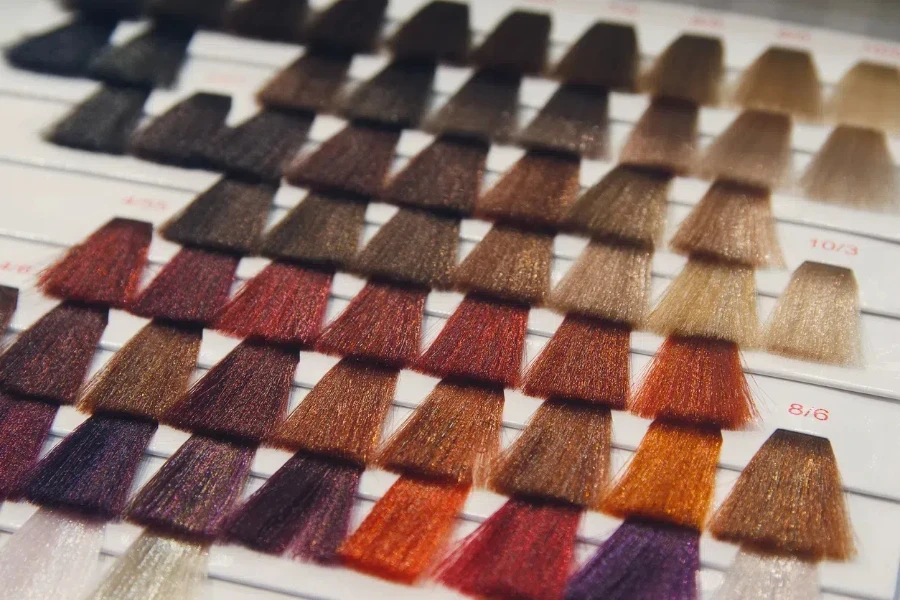
Another big advantage of human hair wigs is that people have the ability to dye or highlight them to add the creativity of vibrant hair colors or match their natural hair color. However, it’s important to use high-quality products and techniques to avoid damaging the hair.
1. Choosing the right dye
- Step 1: Select a dye that’s formulated for human hair, not synthetic hair. It’s typically best to use permanent hair color.
- Step 2: Perform a strand test on a small section of hair to ensure the color will come out as expected and that the hair can handle the dye.
2. Applying the dye
- Step 1: Place the wig on a stand and secure it.
- Step 2: Mix the dye according to the instructions.
- Step 3: Apply the dye to the wig, starting from the roots and working your way down to the tips.
- Step 4: Let the dye sit for the recommended time, then rinse it out with cool water.
3. Aftercare
- Step 1: Use a color-safe shampoo and conditioner to wash the wig after dyeing.
- Step 2: Apply a deep conditioning treatment to restore moisture.
- Step 3: Air dry the wig and style as desired.
Maintaining the style

When it comes to maintaining wigs, there are a few things to consider. You want to use products that will keep your style while you wear it, but you also want to ensure you maintain the overall integrity of the wig to ensure that it lasts.
Here are some tips on wig maintenance:
- Daily care: Lightly brush wigs daily with a wig brush or wide-tooth comb to prevent tangles.
- Product use: Use wig-specific or lightweight hair products to avoid product buildup, as products can weigh down the hair and make it look greasy.
- Storage: Store on a stand or in a satin bag when not in use to help maintain the wig’s shape and prevent tangling, keeping it in good condition.
- Re-styling: Human hair wigs can be re-styled multiple times, but it’s important not to overuse heat tools. Excessive heat styling can cause damage, even to high-quality wigs.
Now that you have the basics, it’s time to go practice styling your wig!
Final thoughts for businesses
Selling human hair wigs online is more than just listing a product; it’s about providing value and educating your customers. By understanding and sharing the proper techniques for styling these wigs, you can position your business as an authority in the market. This not only helps in driving sales but also in building long-term customer relationships.
Whether through blog posts, tutorial videos, or social media engagement, offering guidance on wig styling can significantly enhance your brand’s presence and credibility.
Remember, the more you can help your customers feel confident in their purchase, the more likely they are to return to your store for future needs. So, invest time in learning and sharing your knowledge about human hair wigs, and watch your business grow.
